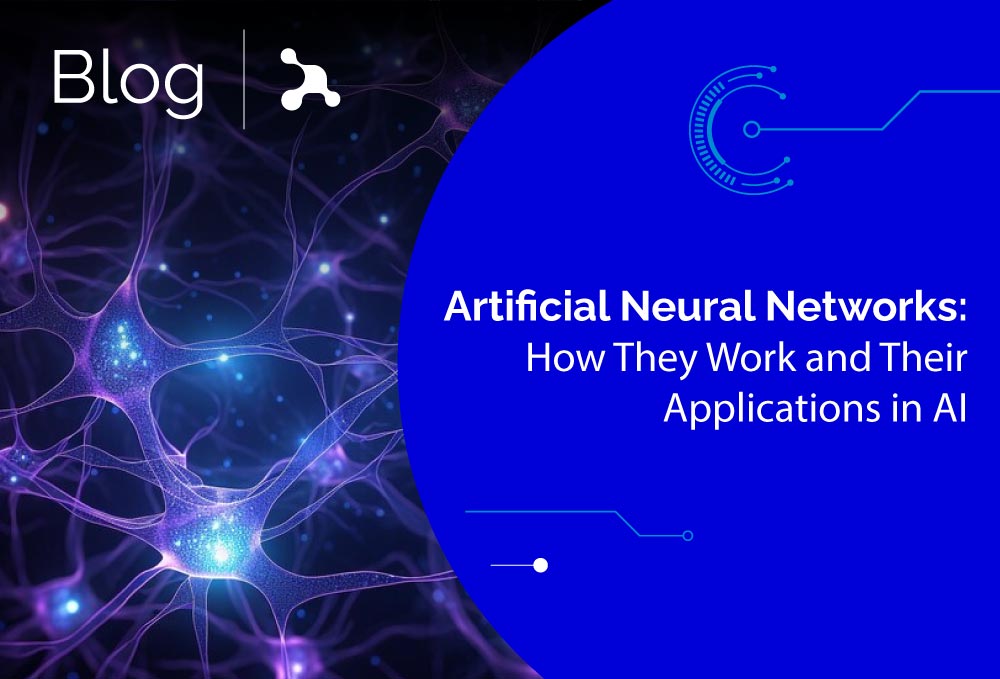In this blog, we will discuss artificial neural networks (ANNs), one of the most fascinating and powerful technologies in the field of artificial intelligence (AI), inspired by the functioning of the human brain.
These networks have revolutionized numerous industries with their ability to learn and make autonomous decisions, so we will explore how they work and their various applications in the world of AI.
What Are Artificial Neural Networks?
Artificial neural networks are computing systems designed to simulate the behavior of neurons in the human brain. They consist of basic units called “artificial neurons” or “nodes,” organized in layers. These layers are generally divided into three types:
- Input Layer: Receives input data.
- Hidden Layers: Process the received information through a series of calculations.
- Output Layer: Produces the final result based on the calculations made by the hidden layers.
How Do Neural Networks Work?
1. Artificial Neuron: Each artificial neuron receives several inputs, each with an associated weight that determines its relative importance. After receiving them, the neuron calculates a weighted sum of these inputs and applies an activation function to determine its output.
2. Activation Functions: Activation functions are crucial for introducing non-linearity into the model, allowing the neural network to learn and represent complex relationships in the data. Some common activation functions are:
- Sigmoid: Produces an output between 0 and 1.
- ReLU (Rectified Linear Unit): Converts negative values to zero and lets positive values pass through.
- Tanh: Produces an output between -1 and 1, useful for centered data.
3. Forward Propagation: In forward propagation, input data is passed through the network layer by layer. Each layer performs calculations and passes its output to the next layer until the final result is obtained in the output layer.
4. Loss Function:The loss function measures the difference between the output predicted by the network and the actual value. The goal of training is to minimize this difference.
5. Backpropagation: Backpropagation is the process by which the neural network adjusts its weights to minimize the loss function. It calculates the gradient of the loss function with respect to each weight and uses this gradient to update the weights in the direction that reduces the loss.
Training Neural Networks
Training a neural network involves multiple iterations of forward propagation and backpropagation. This process continues until the loss function reaches an acceptable value or does not improve significantly with more iterations.
1. Training Data Set: A labeled data set is needed to train the network. These data are typically divided into a training set and a validation set to evaluate the network’s performance.
2. Optimization: Optimizers are used to efficiently adjust the weights during training.
Applications of Artificial Neural Networks
Neural networks have many applications in various industries due to their ability to handle complex data and perform advanced tasks.
1. Image Recognition: Convolutional neural networks (CNNs) are particularly effective in image recognition. They are used in applications such as medical imaging diagnostics, autonomous driving, and surveillance.
2. Natural Language Processing (NLP): Recurrent neural networks (RNNs) and transformer models have revolutionized natural language processing. They are used in automatic translators, chatbots, and sentiment analysis.
3. Data Prediction and Analysis: Neural networks are used to forecast market trends, financial analysis, and risk management, thanks to their ability to detect patterns in large data volumes.
4. Recommendation Systems: Platforms like Netflix, Amazon, and Spotify use neural networks to analyze user behavior and provide personalized recommendations.
5. Medical Diagnosis: In addition to medical imaging, neural networks are used to analyze genetic data and predict diseases, improve treatments, and personalize medicine.
6. Industrial Automation: In manufacturing and industry, neural networks are used for quality control, failure prediction, and process optimization.
Artificial neural networks are a powerful tool in the field of artificial intelligence. Their ability to learn from data and continuously improve has led to significant advances in various areas. As technology continues to evolve, we will see more innovative applications of neural networks in the future.
Implementing neural networks may seem challenging at first, but with the availability of advanced tools and libraries, it is more accessible than ever for developers and businesses. Leveraging this technology can provide a significant competitive advantage and open new opportunities in the digital world.




